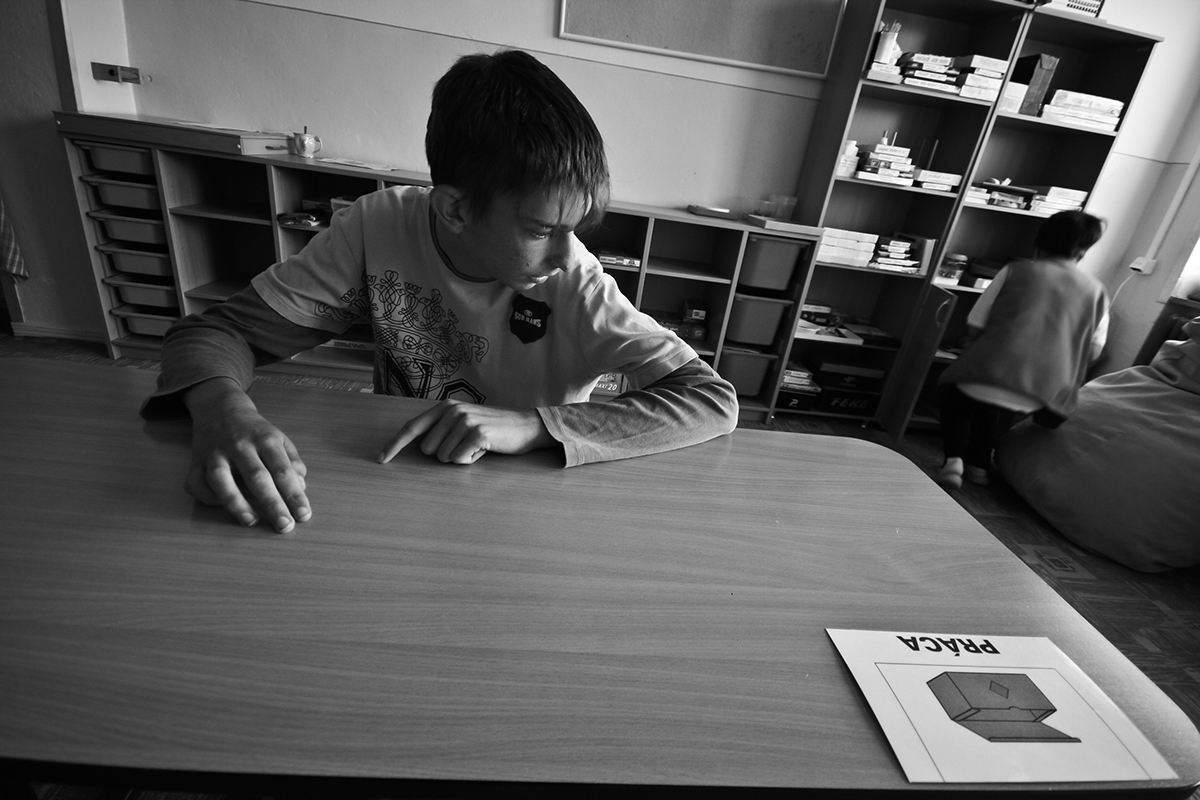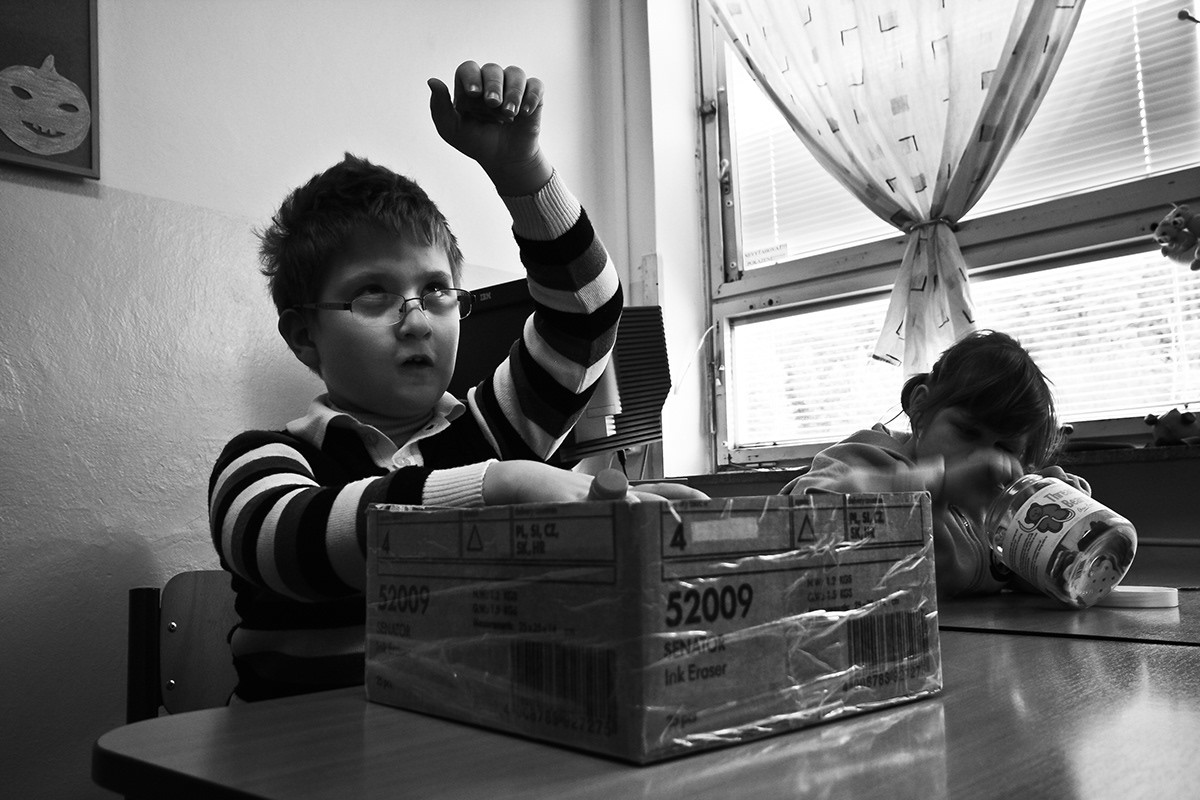
SPECIAL KIDS
“Know me for my abilities, not my disability.” Robert M. Hensel





According to statistics about 10 percent of the population is handicapped, but there are no accurate statistics how many people are handicapped in Slovakia. All these people need a care from an early age.
For these "special kids", there are devices with a comprehensive rehabilitation, which are led by team of experts. Baby grows and then may be included in the educational process. If we want to ensure that children with disabilities are educated with integrity, it is necessary to have enough special educated teachers, adequate didactic equipment, mobility aids, removed barriers and prepared parents. Special schools educate pupils with mental disabilities or the mentally handicapped in combination with other disabilities. Emphasis is placed on developing skills, abilities and attitudes to the value orientation of the pupil. The aim of education at such a school is to develop individual skills and abilities of students: to acquire knowledge, skills and habits necessary for professional training, to acquire competence in accordance with the curriculum, to adopt good attitudes and good relationship with other people and the environment, to be ready for practical life so that they can be naturally integrated into society. Teachers focus on the mental and physical development of students, to compensate for their weaknesses in order to optimally prepare them for practical life. The educational process is carried out in specialized classes.







There are many specialized schools nowadays in Slovakia. The education system should be in generally the same, but may vary from school to school in some details.
Preparatory class is designed for kids from 6 years and aims to develop: communication skills, graphomotor skills, mathematical ideas, work, daily living skills and healthy physical development. At the end of the school year in the preparatory year psychologist and special education teacher at the Center for Special counseling conduct investigations with relevant recommendations. There is a maximum of 6 students in preparatory class. This allows to increasingly adhere to the principle of individual approach. The completion of the preparatory year is considered the first year of compulsory schooling.





The internal breakdown of the educational process takes place according to the degree of mental disability of the pupil:
Variant A of the course content is designed for students with mild intellectual disabilities and it's a reduced version of the regular primary school course content. Education of students lasts nine years. After completion the student obtains primary education and can continue their studies at vocational schools.
The education of students with moderate intellectual disability (B) focuses on the maximum possible development of mental, physical and emotional abilities, while respecting the slower pace of such students and using more methods and corrective exercises. The student should assume basic education so as to be able to continue their education in practical school. Education in the B variant lasts 10 years.
An education according to variant C enrols pupils with severe or profound intellectual disabilities or multiple disabilities (students with intellectual disabilities in combination with physical, visual or hearing impairments). They are educated according to individual educational program with regard to their abilities and possibilities. The basic objective in education is the best personal development while respecting their particularities and differences arising from multiple disabilities. Education is aimed at developing self-service and communication skills, fine and gross motor skills, health, exercise, music and visual arts. Part of this program are methods like Snoezelen, hippotherapy and canistherapy. Education in C variant lasts 10 years. The legal guardian of a student may request an extension of education for two years.









Autism is a pervasive developmental disorder. This means that, unlike specific developmental disorders, it affects all functional areas. Kids with autism have great difficulty understanding incentive to perceive with their senses and properly respond to the situation by observing. Qualitative impairment is manifested mainly in three areas: in communication, in social relations and in the imagination. Therefore are specialized classes for students with autism. There is a space for learning, self-service and relaxation. Over time, the familian environment contributes to greatly stabilizing behavior. Each student has to prepare an individual education program on the basis of the findings of psychological and special pedagogical examination and is based on the curriculum for pupils with autism with mental disabilities.
Children school clubs provides after-school recreation for children with varies interests. Education and activity in school children's clubs is divided into: recreational activities, relaxing activity, leisure time activities, preparation for learning. School clubs are visited mainly by students of first school years. Forms of education and training that are implemented in the various activities are varied and colorful. An important role here has experience. The basic aim is self-realization of every child: a game, walk, talk, competition, quiz, visit the library, reading, working with book illustration, cultural programs and performances, sports competitions, drama, practice songs, poems, drawing, painting, modeling and experiential scenarios.




World of severely handicapped person is different and we can brake through it only if we can find the right "door". Doors to disabled children can be tested with international professional therapy "Snoezelen". Multiply disabled children need a special, suitable incentives, so they may react on them in an appropriate environment.
Snoezelen method creates a space to relax in pleasant surroundings. Special educators include this method in the daily schedule, especially in children with autism and multiple disabilities. "Snoezelen" is a therapeutic-relaxation method based on the use of optical and mirror effects and transformations. It is an approach based on humanistic developmental psychology that emphasizes that each child develops through its own activities in cooperation with other people and the environment. The music is always adapted to the individual or group of students who relax.


